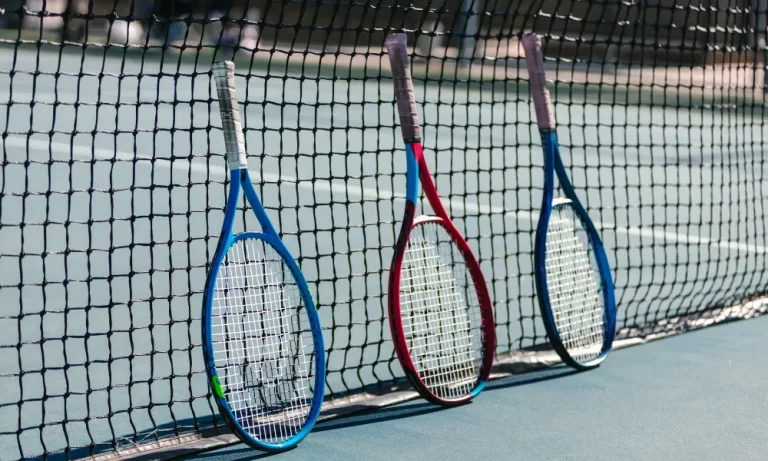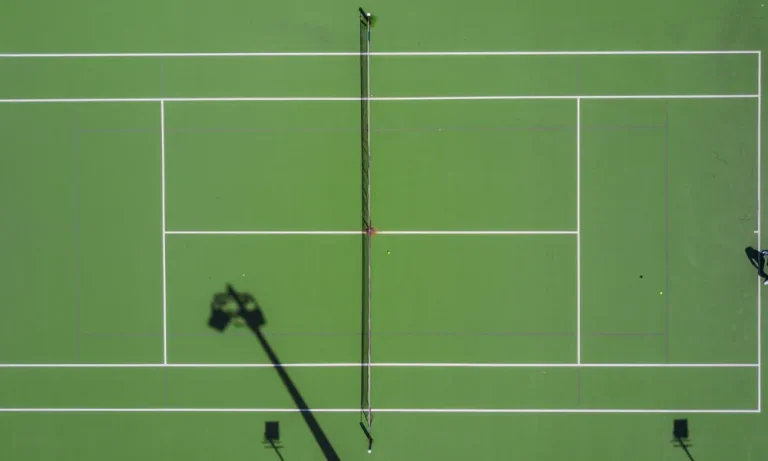How Long is an Average Tennis Match?
Have you ever wondered how long a tennis match lasts? Well, today we’re going to uncover the mystery of the average duration of a tennis match. Whether you’re a tennis enthusiast or just curious about the sport, understanding match length is essential.
Factors Affecting Tennis Match Duration
When it comes to the duration of a tennis match, several factors come into play. Let’s explore these factors one by one to understand how they affect the length of a match.
Tournament Formats
Different tournament formats, such as Grand Slam, ATP, and WTA, can have varying match durations. Grand Slam matches, known for their best-of-five-set format, tend to be longer compared to regular ATP or WTA matches, which follow a best-of-three-set format. The longer format allows for more opportunities to turn the tide and prolong the match.
Match Durations in Different Categories
The duration of matches can vary depending on the category of play. For instance, men’s singles matches are generally longer compared to women’s singles matches. This discrepancy can be attributed to factors like the pace of play, shot selection, and physical endurance of the players involved. Additionally, doubles and mixed doubles matches often have shorter durations due to the increased reliance on teamwork and quicker exchanges.
Court Surface Influence
The type of court surface also plays a significant role in match duration. Grass courts tend to result in faster matches due to their low bounce and quick pace. On the other hand, clay courts, with their slower surface and higher bounce, often lead to longer rallies and longer matches. Hard courts fall somewhere in between, offering a balanced playing surface.
Player Style, Skill Level, and Strategy
The playing style, skill level, and strategic choices of the players can impact the length of a match. Aggressive players who go for winners more frequently may shorten matches by finishing points quickly. In contrast, defensive players who excel at retrieving shots can extend matches by prolonging rallies. Additionally, strategic decisions like serve-and-volley tactics or baseline play can also influence match duration.
Average Duration of Different Tennis Match Formats
When it comes to match durations, we’ll provide you with a comprehensive breakdown. We’ll delve into the average durations for men’s and women’s singles, doubles, and mixed doubles matches. This breakdown will give you a clear understanding of how long each category typically lasts.
Comparison of Tournament Formats
To gain further insights, we’ll compare different tournament formats. Grand Slam tournaments, such as Wimbledon and the Australian Open, are known for their longer matches due to the best-of-five-set format in men’s singles. On the other hand, ATP and WTA events usually follow a best-of-three-set format, resulting in shorter match durations. Lower-level tournaments may also have variations in match duration based on their specific rules and regulations.
Historical Trends and Changes
Intrigued by how match durations have evolved over the years? We’ll examine historical trends to uncover any significant changes. Factors like advancements in technology, player fitness levels, and rule modifications can all contribute to variations in match duration. By understanding these trends, you’ll gain a deeper appreciation for the ever-evolving nature of tennis.
Longest and Shortest Matches in Tennis History
In the realm of marathon matches, the record goes to the legendary Isner vs. Mahut match at Wimbledon in 2010. Lasting a staggering 11 hours and 5 minutes over the course of three days, this grueling battle captivated fans and pushed both players to their physical limits. The match finally concluded with a final set score of 70-68, highlighting the incredible endurance displayed by these athletes.
The Shortest Matches
On the other end of the spectrum, we have the shortest matches ever recorded. In 1988, Susan Tutt defeated Marion Bartoli in just 21 minutes at the Japan Open. This lightning-fast victory showcased Tutt’s dominance and ability to wrap up a match in record time.
Factors Contributing to Extreme Durations
Several factors play a role in the duration of these matches. The Isner vs. Mahut match was heavily influenced by the unique format of Grand Slam tournaments, which require players to win by a significant margin in the final set. Additionally, factors like the players’ physical stamina, playing style, and the competitiveness of the match can contribute to longer durations. Conversely, mismatches or quick victories can result in remarkably short matches.
Memorable Moments
These record-breaking matches have left indelible marks on tennis history. From the sheer determination displayed by Isner and Mahut to the astonishing speed of Tutt’s victory, these moments continue to be talked about and celebrated by fans worldwide.
Strategies for Shortening or Extending Tennis Matches
When players aim to shorten a match, they often employ strategies that prioritize quick points and efficient shot-making. Aggressive players may opt for powerful serves and aggressive returns, aiming to overwhelm their opponents and finish points swiftly. Additionally, players may strategically limit rallies by employing drop shots, net rushes, or aiming for winners early in the point. These tactics can help expedite the match and prevent prolonged exchanges.
Extending the Match
On the other hand, players sometimes aim to extend the duration of a match. This can be a strategic move to tire out their opponents or disrupt their rhythm. Players may adopt a defensive style, employing consistent groundstrokes and well-placed shots to force their opponents into long rallies. By prolonging points, players can test their opponents’ endurance and mental fortitude, potentially gaining an advantage as the match progresses.
Factors Affecting Match Length
Several external factors can also impact the duration of a tennis match. Tiebreakers, implemented to resolve tied sets, can significantly shorten matches by condensing multiple games into a single tiebreak game. Rain delays and medical timeouts, on the other hand, can extend match durations by interrupting gameplay and allowing players time to recover or adjust their strategies.
Impact of Rule Changes
Over the years, rule changes have been implemented to manage match durations. For instance, the introduction of the tiebreaker system in the 1970s aimed to prevent excessively long sets. Similarly, rule modifications such as shot clocks and reduced warm-up times have been introduced to ensure matches progress at a reasonable pace.
Conclusion
The duration of an average tennis match can vary widely depending on various factors such as the level of play, the competitiveness of the match, and the tournament format. While the average match time hovers around two to three hours, it’s the unpredictability and thrilling moments that make each match truly unique and captivating for fans around the world.
FAQs: How Long is an Average Tennis Match
How long does an average professional tennis match last?
On average, professional tennis matches last around two to three hours. However, the actual duration can vary depending on factors such as the level of play, the competitiveness of the match, and the tournament format.
Are there any specific factors that can significantly impact the length of a tennis match?
Yes, several factors can influence the duration of a tennis match. Factors such as long rallies, tiebreakers, rain delays, medical timeouts, and rule changes can all contribute to either lengthening or shortening the match.
What is a tiebreaker and how does it affect the length of a tennis match?
A tiebreaker is a game format used to determine the winner of a set when the score is tied. It condenses multiple games into a single tiebreak game, potentially shortening the overall duration of the match.
Can weather conditions affect the length of a tennis match?
Yes, weather conditions, particularly rain delays, can significantly impact the duration of a tennis match. If play is interrupted due to rain, the match may be postponed or resumed at a later time, prolonging the overall length of the match.
Have there been any rule changes to manage the duration of tennis matches?
Yes, over the years, rule changes have been implemented to manage match durations. For example, the introduction of tiebreakers in the 1970s aimed to prevent excessively long sets. Additionally, shot clocks and reduced warm-up times have been introduced to ensure matches progress at a reasonable pace.






